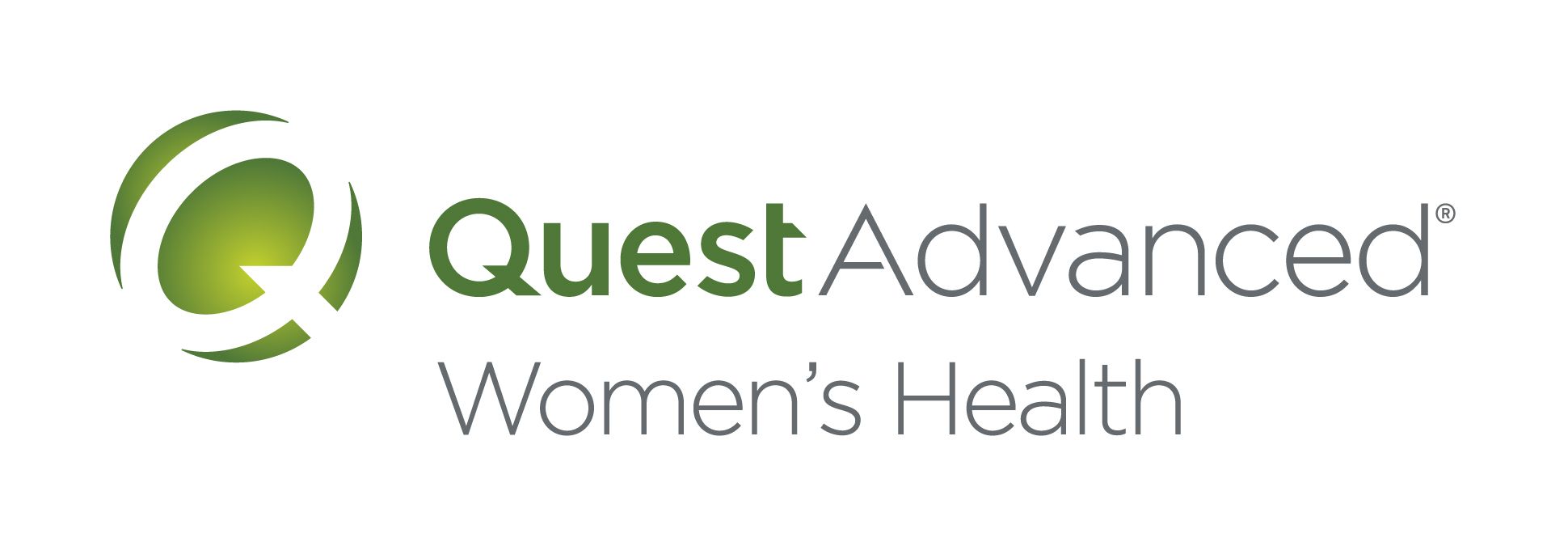The Importance of Including Hemoglobinopathies as a Part of Carrier Screening Panels
Sponsored by


MODERATOR
Christine Isaacs, MD
Professor and Vice Chair of Obstetrics & Gynecology
Virginia Commonwealth University School of Medicine
Richmond, VA

SPEAKER
Cathi R. Franklin, MS, CGC
Cathi R. Franklin is a senior manager in Genomic Services and is a genetic counselor who is board certified by the American Board of Medical Genetics and the American Board of Genetic Counseling. She trains and directs the Genomic Client Service Specialists and the Genomic Coordinator teams at Quest Diagnostics® who support both internal and external genetics clients of Quest.
Cathi joined Quest Diagnostics® in 1995. Her areas of special interest include molecular genetics with an emphasis on the hemoglobinopathies. Cathi has been integral to Quest’s test utilization management efforts and within the genetics community. Additionally, Cathi’s passion lies in training and mentoring the next generation of genetic counselors.
Christine Isaacs, MD: Hello, I'm Dr Christine Isaacs, I'm a professor of obstetrics and gynecology at Virginia Commonwealth University in Richmond, Virginia, and I am delighted you are joining us in Contemporary OBGYN podcast on hemoglobinopathies.
Cathi R. Franklin, MS, CGC: Hi, I'm Cathi Franklin, and I am a genetic counselor and senior manager in genomic services at Quest Diagnostics. I'm located in Valencia, California, and I have worked with hemoglobinopathies for the last 15 years, and I'm really excited to be here.
Christine Isaacs, MD: Cathi, can you talk to us about what hemoglobinopathies are, how common they are in the general population, and how they typically present?
Cathi R. Franklin, MS, CGC: Sure. The word hemoglobinopathy means essentially, abnormal hemoglobin. And you really can't talk about hemoglobinopathies without first talking about the red blood cell. The red blood cells carry hemoglobin, which is the protein whose job it is to carry oxygen from the lungs to the blood, to the tissues in the body. And hemoglobinopathies affect either the quantity of hemoglobin, these are called thalassemias, or the quality of hemoglobin. An example of this is sickle cell disease. With the thalassemias, there's either no globin protein being made, and globin is the protein part of hemoglobin, or there's a decrease in the amount made. So, in sickle cell disease, the amount made is normal, but the quality is abnormal. So, normally, the cells are nice and round and squishy, and in sickle cell, they're not. They're rigid and sickle shaped. These sickled cells then don't move very well through the small blood vessels and as a result will cause blockages. With the blockages, the blood then can't get past, and that means they can't carry oxygen. And without oxygen carried by the blood, this tissue starts to die. This is extremely painful and can be life threatening. Overall, hemoglobinopathies are quite common. And while there are ethnicities that are commonly known for having a high incidence of alpha and beta thalassemia, these disorders are seen in almost every ethnic background. Hemoglobinopathies are seen more commonly in specific ethnicities. But because the US is such a melting pot with people of many different ethnic backgrounds, and often mixed backgrounds, both disorders are not uncommon. For example, in the US, 1 in 365 Black or African American babies is born with sickle cell disease, and approximately 1 in 13 Black or African American babies is born with sickle cell trait. So, you can see that these disorders really are quite common.
Christine Isaacs, MD: So why is it important to include hemoglobinopathies as part of carrier screening panels at preconception or prenatal stages of care?
Cathi R. Franklin, MS, CGC: Well, hemoglobinopathies can have an impact on the long-term health or survival of an individual. Therefore, it's really important to screen for sickle cell disease and thalassemia so that parents and families can seek appropriate support and education when it comes to managing long-term health. The screening can be done at the preconception or the prenatal stage. In fact, hemoglobinopathies screening is included as part of Quest's QHerit carrier screening panel, which analyzes genes associated with multiple autosomal recessive disorders. Screening at the preconception or prenatal stage can facilitate informed reproductive decision making.
Christine Isaacs, MD: So, if a pregnant patient is identified as a carrier of a hemoglobinopathy, as a certified genetic counselor, can you tell us what that means for the patient, the couple and then for the baby? What are the recommendations for next steps?
Cathi R. Franklin, MS, CGC: Well, hemoglobinopathies are autosomal recessive in inheritance. And what this means is that it takes 2 copies of a disease-causing gene, and that's one from the mother and one from the father, in order to have an affected child. So, let's use sickle cell disease as an example. So, an individual who is a carrier of sickle cell diseases is asymptomatic but can pass a sickle cell gene on to their offspring. If their partner also happens to be a sickle cell carrier, there's now a 25% chance that both parents will pass on their sickle cell gene, and as a result, their child would have sickle cell disease. Both members of the couple must be carriers to be at risk for having an affected child. In some cases, one parent can be a carrier of sickle cell and the other have beta thal trait. Neither parent will be symptomatic, but that couple would be at risk for having a child with sickle beta thalassemia, which can also be a very severe disorder. So, if only mom is a carrier of either sickle cell or beta thalassemia, and dad isn't, the result for an affected child- the risk for an affected child becomes negligible. In order to know if there's a risk to a pregnancy, both the patient and her partner should have testing to determine their carrier status. Then, if both members of the couple are carriers, the next step would be to speak with a genetic counselor to review those risks and discuss options available to the couple regarding prenatal diagnosis should the couple want to pursue having a child.
Christine Isaacs, MD: When it comes to the management of hemoglobinopathies, how important is early identification and early intervention?
Cathi R. Franklin, MS, CGC: Well, like most diseases, early intervention is critically important. The earlier you know, the sooner you can implement treatment to mitigate the potentially severe, life-threatening symptoms. Most if not all states do include hemoglobinopathies as part of their newborn screening programs. Having one of these disorders can affect the person's long-term health. So, early identification and subsequent intervention allows treatment to begin at the earliest opportunity. Early intervention and treatment have been shown to be beneficial in helping patients and their families get connected to treatment, support and other services that will allow for effective management and result in a better quality of life.
Christine Isaacs, MD: So currently, what is the more efficient or cost-effective way to evaluate hemoglobinopathies?
Cathi R. Franklin, MS, CGC: So, the idea here is to make sure that people know that there is a method to the madness of how to evaluate someone for hemoglobinopathies. DNA testing is really expensive, whereas a hemoglobinopathy evaluation is usually under $100. By doing the hemoglobinopathy evaluation first, you can narrow down which DNA tests to start with instead of doing a lot of unnecessary testing. It's often referred to as a ‘hemoglobinopathy evaluation’, and this is a relatively inexpensive test, particularly as compared to DNA testing, which we know is quite expensive, and also takes more time to do. Based on the findings of the hemoglobinopathies evaluation, the appropriate DNA test, so in other words, do you do alpha thalassemia or do you do beta thalassemia, would then be the recommended next step in the evaluation. The hemoglobinopathy evaluation consists of a CBC, which is a complete blood count, which tells us the amount of hemoglobin present, whether the MCV, which is the mean corpuscular volume, and the mean corpuscular volume is the average volume of the red blood cell. And the MCH, which is mean corpuscular hemoglobin, which is actually the average amount of hemoglobin per red blood cell. Those are lower than normal. Remember that the red cell carries hemoglobin. A low MCV means that the cells are smaller. If they're smaller, they can't carry as much hemoglobin. If the cells are smaller than they should be, that means they have less oxygen-carrying hemoglobin to bring to the tissues that need it. For the MCH, if the MCH is low, the cells are very pale. Remember that hemoglobin is what makes cells red. So, if you have less hemoglobin, you have less red to color the cell. And usually when the MCV is low, the MCH will be low as well. When you look at a CBC and you see a low MCV, MCH, you can really only at that point say that the person might have thalassemia trait. They might also have iron deficiency, and you can't tell if the person has alpha or beta thalassemia trait until you do the second part of the hemoglobinopathy evaluation, which is the HPLC. And that part will tell us the amount of the different types of hemoglobin that are present. And these hemoglobins include hemoglobin A, which is adult hemoglobin, hemoglobin F, which is the fetal hemoglobin, which in normal adults there should only be trace amounts of hemoglobin F, and then the A2 which is delta globin. In beta thalassemia, the A2 will be elevated. In alpha thalassemia, the A2 will be normal, and a normal hemoglobin A2 can be tricky because someone with a low MCV, MCH and a normal A2 can have alpha thal trait, but they could also have iron deficiency, since iron deficiency also lowers the MCV and the MCH, and they can also have both alpha thal trait and iron deficiency. Running a serum ferritin is helpful for determining if iron deficiency is present. Once you've determined which thalassemia is most likely, you can then do DNA studies for either alpha thalassemia or beta thalassemia, whichever is the one that's more likely. While it's possible for someone have more than one type of a hemoglobinopathy, you want to first begin with the tests that are quick, easy and cost effective, which is the hemoglobinopathy evaluation, and then determine whether or not you wanna start with DNA testing for alpha thalassemia or beta thalassemia first. Additionally, by doing the hemoglobinopathy evaluation first, the provider can narrow down what the biggest risk might be. There are many providers who will order the hemoglobinopathy evaluation and the DNA testing for alpha and beta thalassemia all at the same time, and that's really expensive and it's doing a lot of unnecessary testing. For example, if the A2 was elevated on the HPLC, that would dictate starting with DNA testing for beta thalassemia because alpha thalassemia would have a normal A2.
Christine Isaacs, MD: What are the pitfalls that OBGYN providers face when ordering hemoglobinopathy testing?
Cathi R. Franklin, MS, CGC: So, as I mentioned, identifying hemoglobinopathies is definitely a stepwise approach. As I mentioned earlier, the hemoglobinopathy evaluation is really the most expedient cost-effective way to begin working up someone with a suspected hemoglobinopathy. It helps to narrow down which disorder to investigate first. Again, you can have both but you wanna look for one that's the most likely. Once you've identified which hemoglobinopathy is suspected, in other words, alpha versus beta thalassemia, then DNA testing for that disorder would be the next step to further identify the variant. And there are different tests and testing modalities that serve different clinical utilities. And providers ordering these tests are not always aware of the differences and may not necessarily know which test is the appropriate test for their clinical need. So, if they order the test that's not the best one, unnecessary testing can occur. It's generally believed that sequencing the gene is the most comprehensive test, which will identify everything that clinician is looking for. But what many providers don't realize is that sequencing does not identify large gene deletions. And with alpha thalassemia, because 85 to 90% of people with alpha thalassemia have deletions in their genes, they're actually missing genes, vs point mutations, which where the gene is intact but there's a mistake within the gene, sequencing really isn't the optimal test to begin with because it's going to miss the vast majority of individuals who actually have alpha thalassemia. Consequently, a negative result would mean that you've only eliminated 10 to 15% of the risk because you haven't used the appropriate test. So, a negative result here is not a very powerful negative result. With beta thalassemia, the vast majority of cases are caused by point mutations. Again, these are mistakes within the gene, but the gene is intact vs a deletion in the gene. As such, beta globin sequencing is the correct test to order as the first-line test to rule out beta thalassemia trait. Yet many providers aren't aware of this and may order dosage testing, and dosage testing looks for big deletions. Only a very small percentage of beta thalassemia trait is caused by a deletion. So, ordering the wrong test for either disease can result in a lot of extra, unnecessary testing having to be done. This uses up valuable resources and can result in a delay in identifying and treating disease.
Christine Isaacs, MD: So why do you think it's important to do a hemoglobinopathy evaluation prior to a DNA test when evaluating for hemoglobinopathies?
Cathi R. Franklin, MS, CGC: So, DNA testing, as I mentioned, is really expensive and it uses a lot of resources. It also winds up costing the patient more. There are many providers who want to do DNA testing for alpha and beta thalassemia without doing the hemoglobinopathy evaluation first. While it is possible to have both disorders, it's really more likely that someone's going to be a carrier for one vs both. For example, one of the values on the hemoglobinopathy evaluation is the hemoglobin A2, and the hemoglobin A2 levels are going to be elevated in people with beta thalassemia trait. If someone's A2 is normal, you have a little reason to do beta globin sequencing, because given the normal A2, it's very unlikely that somebody would be a carrier of beta thal. Now you've saved the patient in the healthcare system a whole lot of money by not doing a test that has little likelihood of getting a hit. By doing the hemoglobinopathy evaluation first, you can determine which thing to go after first.
Christine Isaacs, MD: Can you comment on how QHerit has changed the landscape for genomic testing in pregnant patients?
Cathi R. Franklin, MS, CGC: Sure. Traditionally, genetic carrier screening has been ethnicity based. So, they focused on a small number of disorders that were known to be more common in those ethnicities. So, a good example of that is Tay-Sachs disease in people with Ashkenazi Jewish ancestry, or sickle cell disease in those of African descent. More recent guidelines set forth by the American College of OBGYN recognize that because populations are more diverse, and as such single ethnicity panels may not be effective. Expanded carrier screening acknowledges that specific disorders are less likely to be confined to a specific ethnic group, especially when more and more couples are of mixed ethnicity. QHerit is Quest's answer to the need for a pan-ethnic screening panel. Quest has ensured that its QHerit panel is insightful, actionable, but still follows ACOG guidelines. QHerit has allowed pregnant patients, as well as patients planning to get pregnant, to have more information, and as a result, they're able to make better informed decisions regarding the reproductive health.
Christine Isaacs, MD: Cathi, thank you so much for all of your insight and wisdom on diagnosing hemoglobinopathies. I've really enjoyed our conversation.
Christine Isaacs, MD: Well, thank you very much for having me. It's been a lot of fun doing this. Thank you.
Laser Treatment for Genitourinary Syndrome of Menopause
June 22nd 2020Sponsored Content: The opinions expressed on this podcast are based on the guest’s medical opinion and experience with the product. The content is being provided for informational purposes only. Individual treatment results may vary. Please contact Candela for additional product information.
Listen
